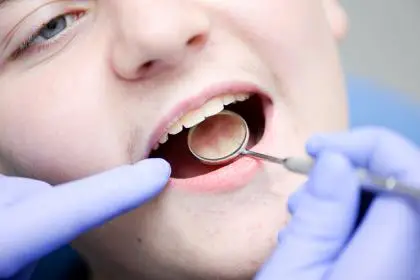Hygiene and periodontics

The term “periodontium” refers to a whole complex of tissues that surround the tooth. When its function is disrupted, teeth soon become mobile, the appearance of the gums deteriorates, malocclusion develops, and issues such as bad breath, tooth hypersensitivity, and significant discomfort arise.
The most common cause of complaints is gingivitis, which can affect people of all ages.
The main symptom of gingivitis is gum inflammation, accompanied by bleeding, and sometimes ulcers or gum swelling. This is a completely reversible disease, requiring only timely intervention by a periodontist.
Gingivitis is usually treated quickly with professional hygiene performed by a doctor, along with the use of rinses and gels. In severe cases, comprehensive examination by a therapist, endocrinologist, or gastroenterologist may be necessary. The earlier treatment begins, the quicker and easier the recovery process will be.
If gingivitis is not treated and prevented in time, it progresses to a new stage – periodontitis.
Periodontitis is a complication of gingivitis, where inflammation penetrates deeper and affects the bone. In addition to the symptoms of gingivitis, tooth mobility and bone resorption (visible on an X-ray) may occur.
The treatment of periodontitis depends on the extent of the damage. Sometimes professional cleaning, dietary correction, and replacing fillings are sufficient, while other cases may require surgical intervention, bone restoration, or tooth splinting.
The progression and development of periodontitis are often linked to overall health, so it may be necessary to conduct tests and consult with related specialists.
Periodontosis is not a disease but a process leading to changes (up to resorption) in the bone tissue. Structural changes in the periodontium occur due to disrupted nutrition: the bone gradually atrophies, and gum height decreases. This results in not only a cosmetic defect (exposed tooth necks) but also a functional issue — teeth lose stability, shift, become difficult to fit with prostheses, and existing dental restorations require more frequent replacement.
Methods of treating periodontal diseases at Sigma Dent:
- Professional hygiene (mechanical, ultrasonic cleaning, Air-Flow soda polishing)
- Use of the “Vector” device
- Splinting and grinding teeth to eliminate overload
- Replacement of low-quality or traumatic fillings and prostheses
- Open and closed curettage — cleaning of periodontal pockets
- Surgical gum plastic surgery, laser edge correction
- Bone loss restoration
- Medication therapy (anti-inflammatory, immunostimulating, detoxifying, hormonal, antibiotic therapy if needed)
- Diet and lifestyle correction, individual selection of oral hygiene products
We ensure a high level of sanitary safety: all consumables are disposable, and instruments undergo thorough disinfection and sterilization, eliminating the risk of infection.

